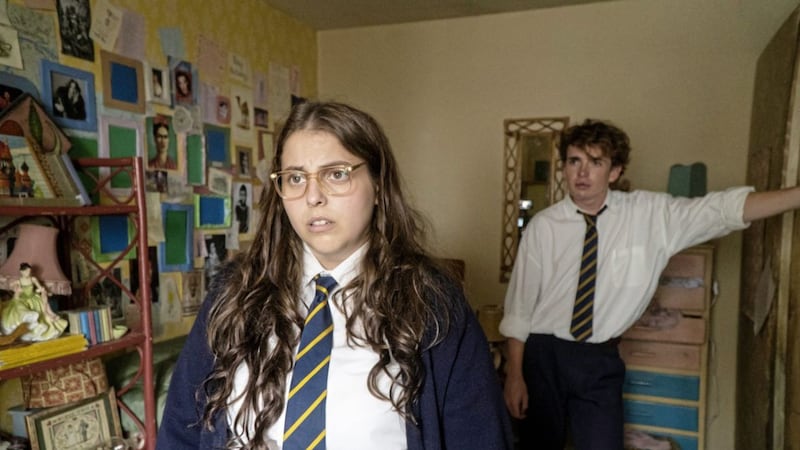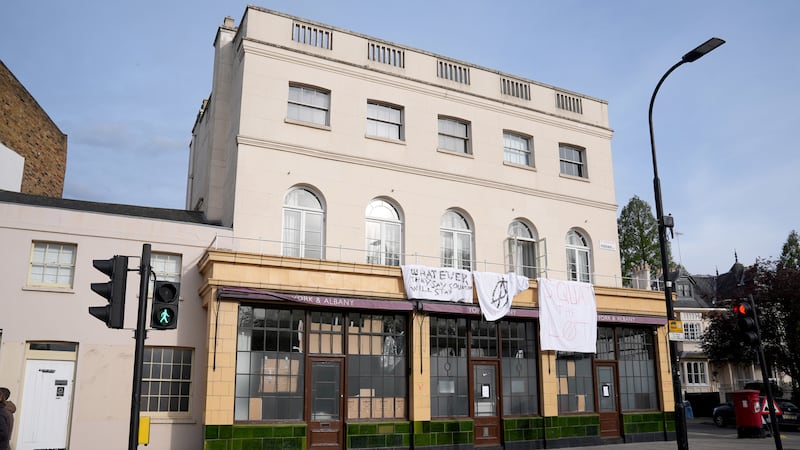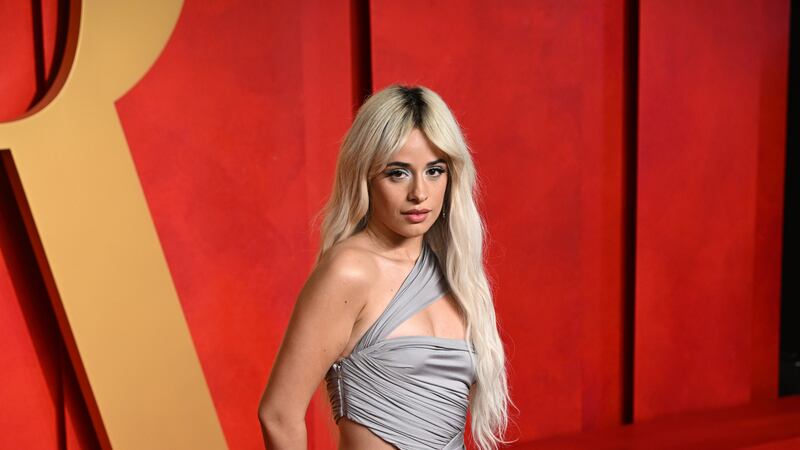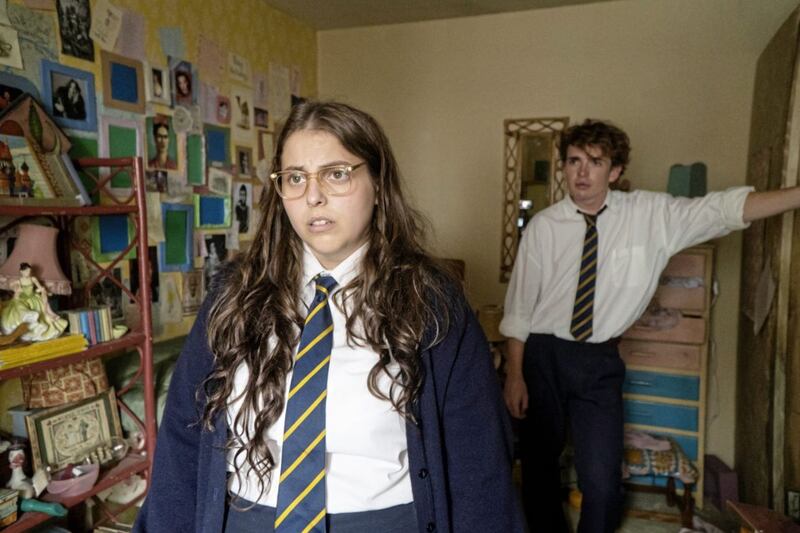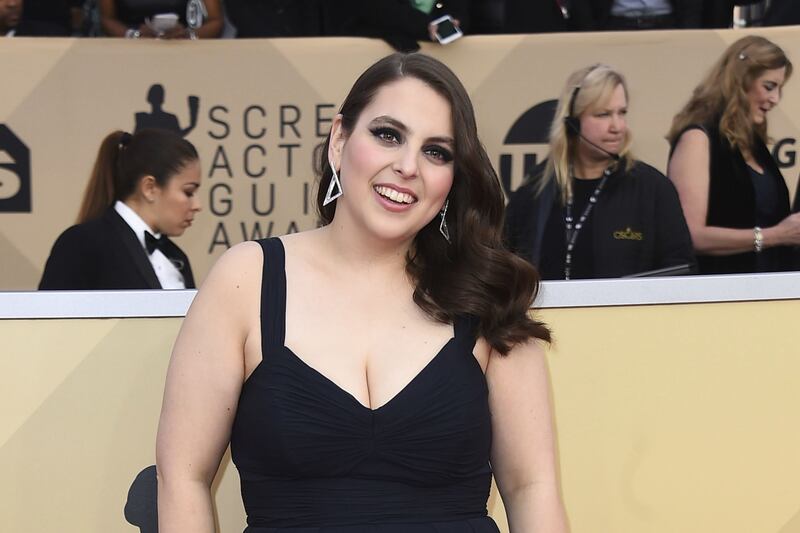HOW do you become the person that you want to be? That is the central question posed in Caitlin Moran’s 2014 best-selling book How To Build A Girl, about a teenage girl from Wolverhampton in the 1990s who becomes a rock critic in London.
And it was the question that resonated so acutely with actress Beanie Feldstein, who now stars in the long-awaited film adaptation.
“It was instantaneous,” she says animatedly from her home in Los Angeles. “You read Wolverhampton, England, 1993, and as someone from Los Angeles, California, who was born in 1993, there was no sort of reason that I should be instantly connected to the circumstances of the film, obviously. But I read the opening scene of her in the library, swinging her leg and daydreaming and I just could feel myself there.
“Sometimes you have those magic moments when you’re reading scripts where you just know.”
Feldstein, who has enjoyed breakout roles in Lady Bird and last year’s sleeper hit Booksmart, plays Johanna Morrigan, a schoolgirl whose dreams don’t fit inside her parents’ house on a council estate in the English midlands, stuffed full of her siblings.
After she wins a writing competition by reviewing the Annie soundtrack, she is thrown head first into the world of rock music, where she reinvents herself as the notorious and caustic critic Dolly Wilde.
“I think that the most kind of pure connective tissue between us is our love of the world,” she says. “I’m a very optimistic, gregarious person who is bubbly and outgoing and loves people and loves this thing that we’re doing in life, and I think Johanna is the same way.
“She really loves the world and she’s very hopeful, and I think even though we have very different life paths and circumstances and journeys and accents, obviously, the heart of where she begins is very much who I am, and so I knew our starting place was the same.”
The film also documents Johanna’s sexual awakening as she transforms from shy bookworm to liberated girl-about-town.
“There just was no way we could make an adaptation of that novel and not include her sexual journey, because it’s such a big part of her journey as a whole,” 27-year-old Feldstein says.
“I think so often in the media that I was exposed to growing up, like books, television, film, anything, boys are always kind of allowed to explore. It’s just so much more free in the discourse around boys.
“It’s just like: ‘Ha ha, Johnny’s in the bathroom for too long’ and with girls, you would never, ever speak of it.
“On network television in the states, it’s spoken about so freely when it comes to teenage boys, but it’s never spoken about with girls. It’s still so taboo, just girls being sexual, having any sort of wants or needs is still under the rug, or quiet, or embarrassing, or shameful.
“And Caitlin’s gift that she brings to the world is taking all of that away, and addressing something with humour and love and safety and I think so many women, and people of all genders, just feel connected to how open she is.
“It’s comforting, I think, when people just speak about something directly, it takes the shame away, it takes the embarrassment away, and we had to include that for Johanna, there was just no way we couldn’t.
“It’s so joyful and funny, so it’s comfortable for the audience to absorb, because you’re laughing, you’re enjoying yourself – she’s enjoying herself. And it takes the taboo nature out of it and shows that this is an important part of her journey and it can be a wonderful, positive experience where she’s in control, she’s safe and she’s having fun.”
But along with all the joy of exploration and empowerment, Feldstein also wanted to show young women watching the film that mistakes are just a part of life.
“There is a final monologue, where Johanna kind of breaks the fourth wall and speaks directly to the audience, down the lens, which was a very intimidating moment in general.
“I come from theatre, so it took me a long time to pretend the camera wasn’t there, and all of a sudden I was supposed to like be looking directly into it.
“But the monologue was so beautiful and so meaningful to me, as Beanie, and was so meaningful for me to get to say as Johanna, and to kind of give this gift that Caitlin has given through her writing to the audience, saying: ‘It’s OK to mess up, it’s OK to try on different selves, that’s a part of being human.’
“That’s beautiful for anyone to hear but specifically teenage girls, who are so often left behind or not respected in some ways, and it was really meaningful to me.”
This was equally important to the film’s director Coky Giedroyc, who has previously worked on TV shows such as Harlots, The Virgin Queen and The Hour and the 1999 film Women Talking Dirty, starring Helena Bonham Carter and Gina McKee.
“It was incredibly important that her sexual liberation was there, and that she should be seen in the story to be experimenting, having sex with sometimes not quite the right person, let’s be honest.
“Messing up, trying things, getting it wrong, and it was incredibly important to me that she’s not punished for it. That’s the old trope, isn’t it? That’s the old accepted idea… a woman has sex with the wrong man and then gets punished or dies.
“It just seemed really important to tell a new story and be real about it and look around you to see how things are – let’s have fun with this, let’s be positive.”
:: How To Build A Girl is streaming now on Amazon Prime Video.
